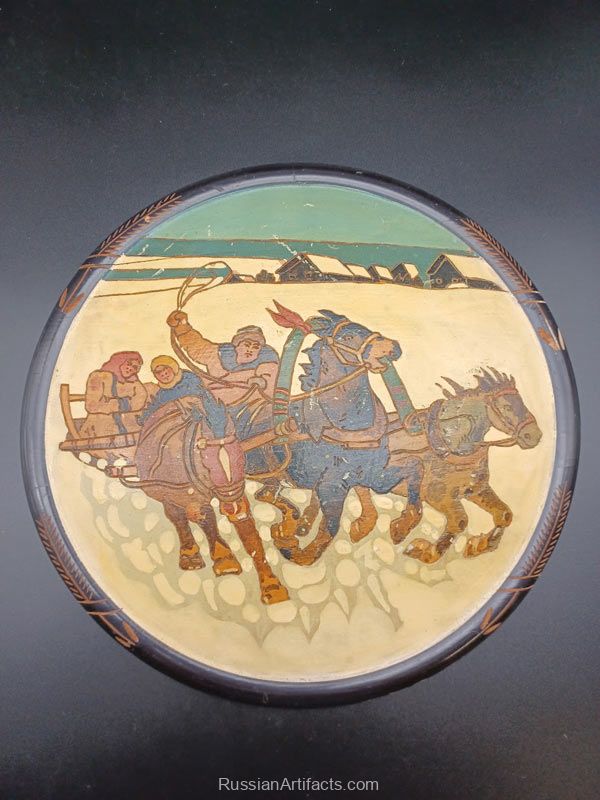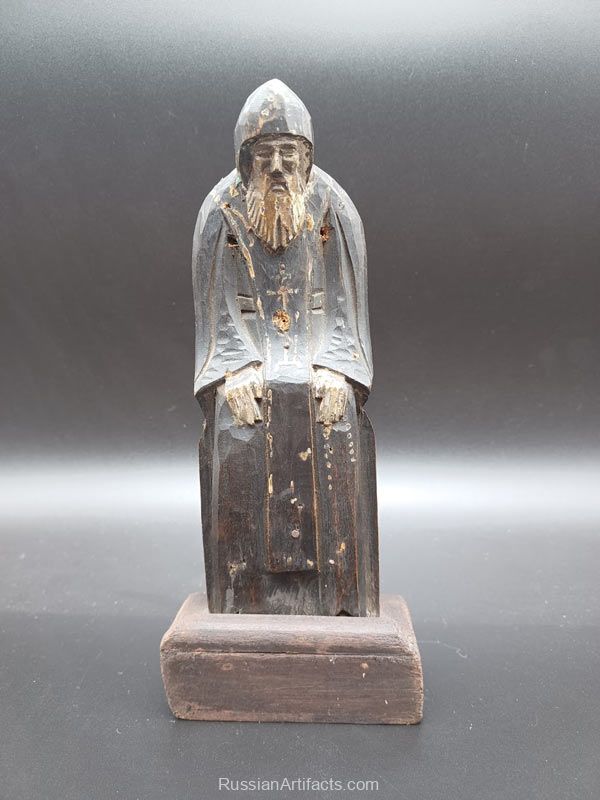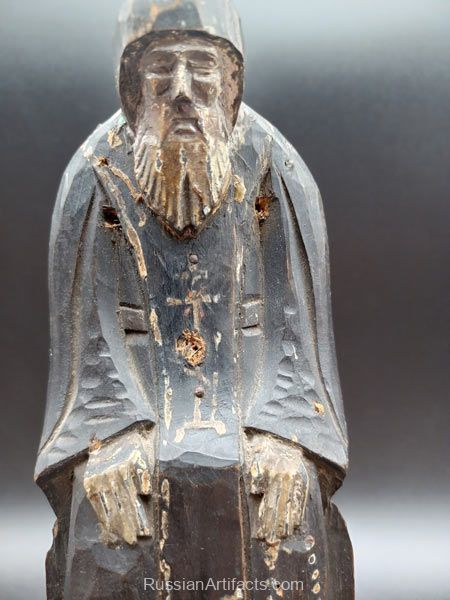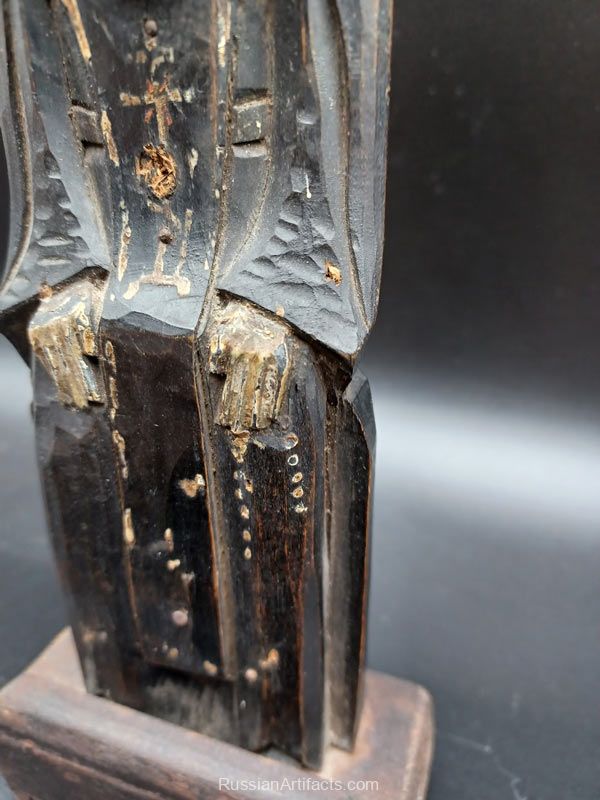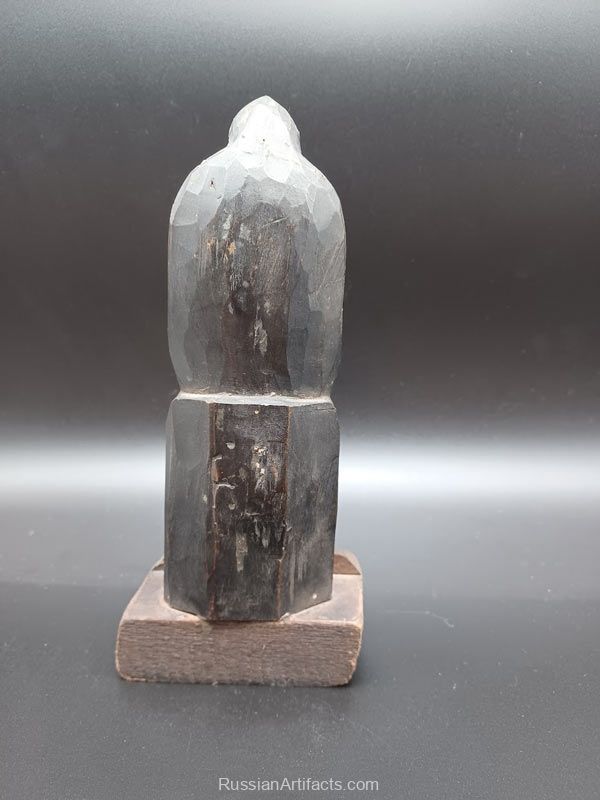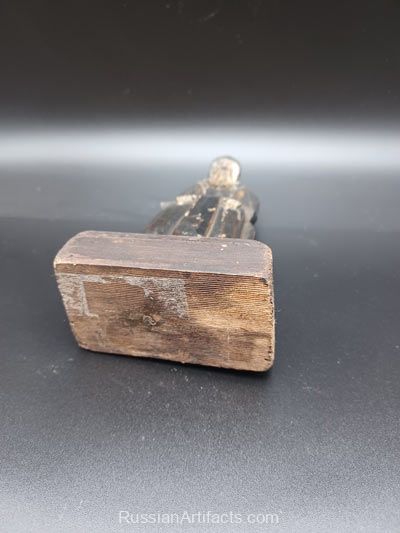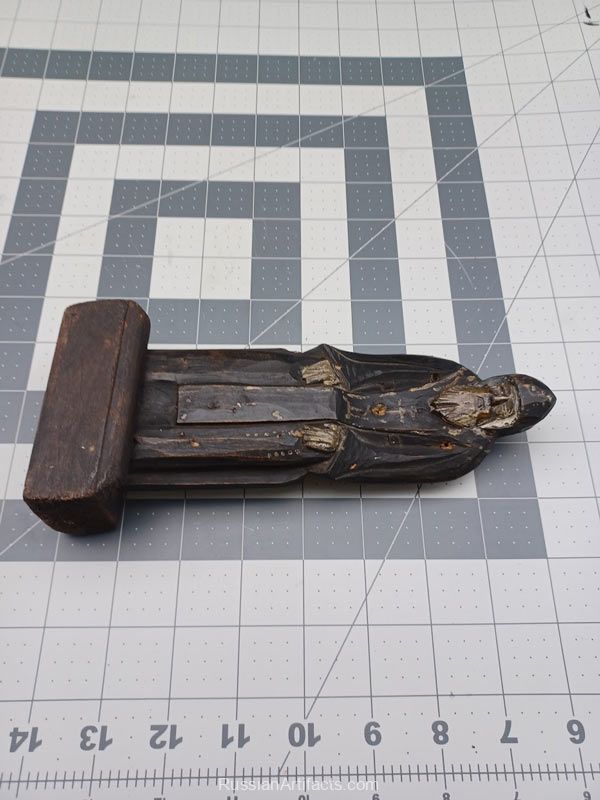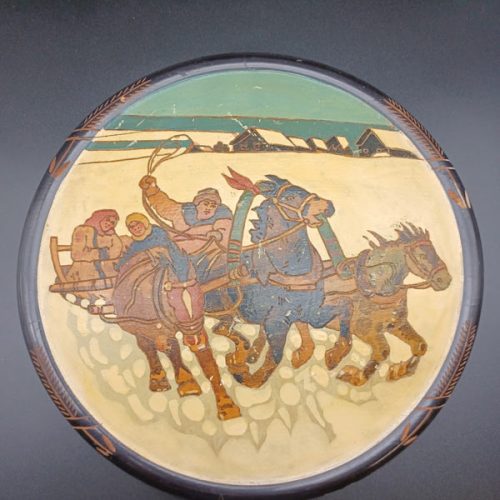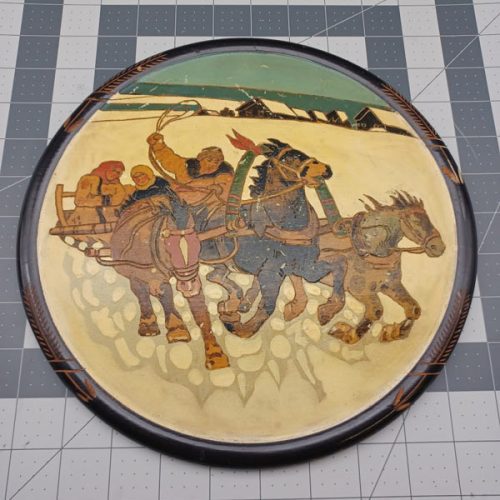19 th Century. Saint Nil Stolobensky Carved Relief Wood Icon
$200.00
Only 1 left in stock
Description
19th century. Saint Nil Stolobensky carved relief wood figurine statue icon. 8″ tall.
In iconography, the image of St. Nil Stolobensky was most developed in the form of wooden carved sculpture or bas-reliefs.
Nil Stolobensky (late 15th century, Derevskaya Pyatina – December 7, 155, Stolobny Island on Lake Seliger) – a saint of the Russian Orthodox Church , founder of the Nilov-Stolobensky Hermitage. He was canonized as a monk and is commemorated on December 7 (20) , May 27 (June 9) ( uncovering of relics ), as well as in the Council of Tver Saints and the Council of Novgorod Saints.
The life of the Venerable Nil is known from his life , written at the end of the 16th century by a monk of the Vologda Holy Trinity Gerasimov Hermitage, Philotheus Pirogov, based on records of the life and miracles of the Venerable, compiled by Herman , the first abbot of the Nilov-Stolobensk Hermitage. He also compiled a canon to the Venerable.
The Nilov-Stolobenskaya Hermitage, built on the site of the hermitage of St. Nilus. Photo by Sergei Prokudin-Gorsky. He was born at the end of the 15th century in the Zhabensky parish of the Derevskaya Pyatina of the Novgorod land ; no information has survived about his parents or secular name. At an early age, he was orphaned and came to the Krypetsky Monastery, where he took monastic vows with the name Nil in honor of the Monk Nil the Faster . After living in the monastery for some time, Nil left it and in 1515 came to the forest near the Cheremkha (Seremkha) River, where he built himself a cell, in which he lived as a hermit for 13 years. Gradually, news of the hermit who had settled in the forest began to spread, and people began to come to Nil for guidance and prayers . Weary of attention, in 1528 he left his Seremkha Hermitage and moved to Stolobny Island on Lake Seliger.
On the island, Nil dug himself a dugout, in which he spent the first winter, and in the summer he built a wooden cell and a chapel . The monk lived alone on the island for 27 years; he earned his food through farming, and accepted gifts of fish from fishermen who sometimes visited the island. Nil was distinguished by his special asceticism : not wanting to sleep lying down, he drove hooks into the wall of his cell and, leaning on them, rested.
For his burial, Nil dug a grave for himself in the chapel in advance and placed a carved coffin in it, to which he came to mourn his sins. Reverend Nil died on December 7, 1555. Before his death, he was visited by his spiritual father , the abbot of the Nikolsky-Rozhkov Monastery, Abbot Sergius, who confessed and gave him communion. Arriving on the island the next day, Sergius and other monks found Nil dead and performed his burial.
Five years after Nil’s death, a tomb was built over his grave in the chapel and covered with a shroud. In 1595, the first icon of the saint was painted, and after that, according to Evgeny Golubinsky , his local veneration began (the beginning of his church-wide veneration remains unknown).
Replicas of the miraculous sculpture
In iconography, the image of St. Nil Stolobensky was most developed in the form of wooden carved sculpture or bas-reliefs. In sculptural images, “Nil Stolobensky is depicted sitting with his head bowed to his chest and leaning on wooden crutches. In such an unusual position, the emaciated elder died during prayer”. There are two traditions of such images: in the form of a sculpture from 10 to 40 cm high or a small cut relief of 20 by 25 cm. Such figurines were made in large quantities for pilgrims visiting the Nilov-Stolobensky Hermitage. Large sculptures of human height are also known, which were created by order of private individuals or for chapels and churches. The sculptures were decorated with votive offerings (pectoral crosses, icons, rings and earrings, beads, scraps of fabric) as a sign of gratitude for healing through prayers to the saint.
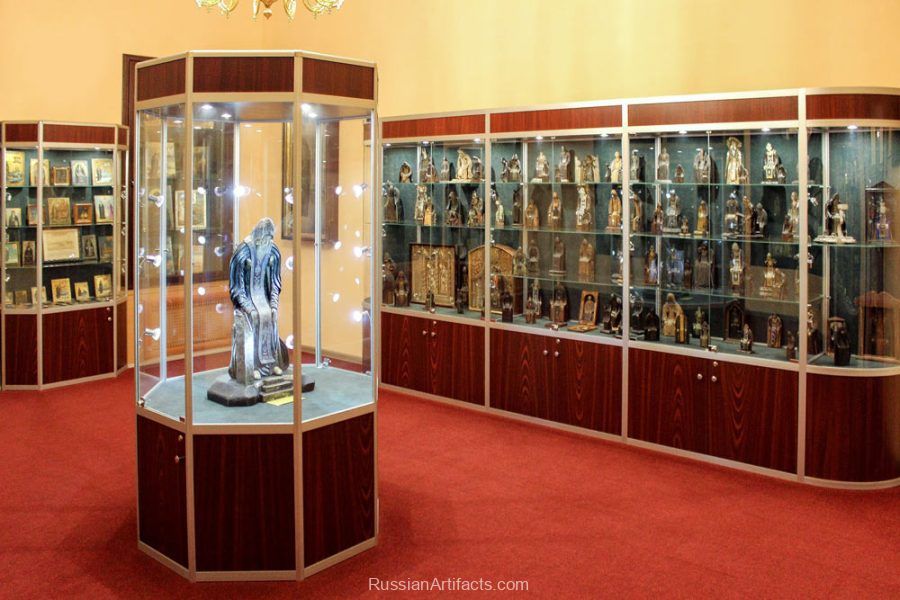
Museum-sacristy “The Legacy of St. Nile”
The wooden sculpture of the Venerable Nil has not developed a clear iconography (except for his pose) – “some masters depicted him as a frail old man, others – as a hero from the epics”. It is noted that the schema of the Venerable on sculptures is traditionally painted black, however, individual sculptures are known to be painted with bright colors and gilded, while the crosses and inscriptions on the schema are in relief.
The image of St. Nil Stolobensky is depicted on the coat of arms of the Firovsky district of the Tver region.

